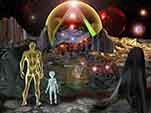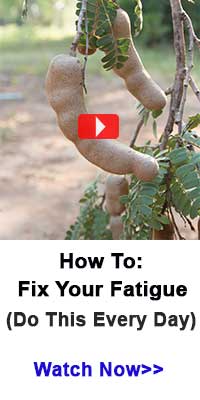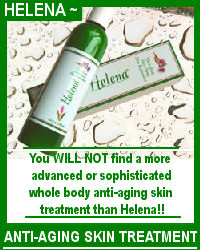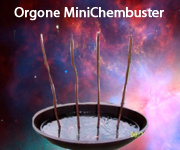https://www.prohealth.com/library/diets-and-lyme-which-one-is-right-for-you-92979
Most people with Lyme disease have problems with “trigger foods” — foods that trigger a histamine response, a rise in inflammation, or some other unwelcome reaction. During Lyme disease treatment, most of us need to restrict our diets to feel the best we can and speed healing.
What the best Lyme disease diet? Here are some basic guidelines for creating a healing diet, as well as a comparison of four popular diets that may lessen Lyme disease symptoms.
Basics Of A Healing Lyme Disease Diet
Most diets that help to heal Lyme disease, especially chronic Lyme disease, have a few things in common. Experiment with these basics to find out if they work well for you, or what foods to avoid.
Lessen or eliminate sugar intake (especially refined sugar). Not only does sugar increase inflammation, but most bacteria and fungi (like Candida) love to eat sugar.
Try going gluten free. Gluten is notoriously inflammatory, unless you have a gut like a steel trap.
Try eliminating dairy. The casein in dairy is also inflammatory for most people.
Lessen or eliminate commercially processed seed oils like canola, soy and corn oil. These oils are highly reactive to heat and light, and are often rancid. They raise inflammation and tax the liver and kidneys.
Choose organic, unprocessed foods whenever possible. This reduces your exposure to toxic pesticides and denatured oils.
Buy grass fed, organic meat and pastured eggs, if you eat them. Cows and chickens that eat commercial corn and soy contain a higher ratio of omega-6 to omega-3 fats, and omega-3 fats lower inflammation very efficiently in the body.
Purchase wild caught, smaller fish like tilapia or herring instead of tuna or salmon when you can. Smaller fish absorb less mercury, and wild caught fish (even the big ones) eat their natural diet and are free of the additives fed to farmed fish.
Eat nutrient-dense foods, like leafy greens, colorful vegetables and fruits, organ meats and bone broth (if you eat animal products).
These basics will help anyone healing Lyme lower the pathogenic microbial load, lessen inflammation, and decrease the toxic load on the liver and kidneys.
Beyond the basics, there are several different diets out there that can help to speed healing. All of them can be beneficial for different reasons, depending on your body’s unique needs. Here is a comparison of four of the most popular diets for healing Lyme disease.
1. Paleo
The paleo diet is a very basic diet to lower inflammation. This diet uses the logic that our bodies evolved eating what our ancient Paleolithic ancestors could hunt and forage: plants and meat. The paleo diet eliminates grains, refined sugars, and dairy — all of which only came into use after the rise of agriculture. It also cuts out all commercially-processed sugars and oils, which only showed up on our menus in the last hundred fifty years or so.
The paleo diet lowers, but doesn’t eliminate, sugar intake. The sugars allowed on the paleo diet are fruit, coconut sugar, maple syrup and other natural sugars. Because of this, those with Lyme, who are particularly sensitive to sugar, may need to restrict their diet a little further. Beware, as well, of all the new “paleo” foods out there that are just as processed and commercial as a bag of Doritos. Food corporations are always looking to make a buck!
2. AIP: The AutoImmune Paleo Diet
The autoImmune paleo diet, or AIP, was created specifically for those experiencing autoimmune disorders, or extreme sensitivity or allergy to foods. Many people with Lyme fit into this category.
AIP eliminates all foods that commonly trigger allergic or histamine reactions, or that raise inflammation. This includes grains, legumes, eggs, nuts and seeds, nightshades, shellfish, processed oils and sugars, coffee, and alcohol. On the AIP diet you will be eating fish, poultry, meat, greens, squash, sweet potatoes, and fruit. The meats that are least likely to cause reactions are lamb, venison and bison. Just like the paleo diet, AIP does allow some sugar intake in the form of fruits and unrefined natural sugars.
The AIP diet diet is very restricted, but I can tell you from personal experience that if your body is freaking out after every meal, the diet is a godsend. After some months (usually six months to a year), you can start adding foods back in and testing your response.
3. The Ketogenic Diet (Keto)
Subscribe to the World's Most Popular Newsletter (it's free!)
Email Address
The human body evolved to make energy by burning primarily glucose derived from plant sugars and proteins. You read that right — we turn excess protein into glucose to be burned as fuel! (The process just takes a while, which is why eating foods high in protein doesn’t raise your blood sugar.)
However, over the history of evolution, humans have needed to survive periods of food scarcity and even famine. Our bodies have evolved a sophisticated way to create fuel in the absence of glucose. When glucose is scarce, we burn fat instead. This process is called ketosis.
When we burn fat, we turn it into “ketones” in the liver, which are burned to create energy. Though it takes a few days to make the transition from burning glucose to ketones, it turns out that burning ketones is highly efficient and even beneficial for our bodies. Ketosis has been shown to lessen inflammation, improve endurance, and protect brain tissue. It also starves pathogens by eliminating sugars.
Throughout human history, humans have entered ketosis in times of food scarcity — burning fat stored on our bodies (in other words, losing weight). In modern times, however, you can choose to enter ketosis by managing your diet.
In the ketogenic diet, or keto, you eliminate most sources of glucose, and may even limit protein intake in favor of high quality fats. Keto severely limits carbohydrates of any sort. But you don’t have to starve, or even lose weight if you don’t need to. You just feed your body mostly fat and some protein, forcing it to create and burn ketones.
The keto diet typically includes a lot of nuts, seeds, high fat meat (think bacon or salmon), avocados, and coconut fat. Cheese is ketogenic, since the idea is lowering inflammation by burning ketones, not by eliminating allergic reactions or sensitivities. Leafy greens are fine, as they contain barely any carbohydrates, but you won’t be filling your plate with tubers, grains or fruits.
You can buy gadgets to test your ketone levels. Even creating small levels of ketones can be beneficial for the body. And if dairy causes reactions for you, of course you can substitute other foods instead.
4. Vegan Diet
The vegan diet, as most people already know, involves eliminating all animal foods: No dairy, no eggs, no meat or fish – some vegans even avoid honey. Vegan diets can be extremely unhealthy – theoretically, you could survive on Wonder Bread and Fritos as a vegan. (But you wouldn’t get far in terms of healing Lyme disease.)
People with Lyme who choose a vegan diet usually eat a ton of vegetables, fruits, squashes, and tubers. Some tolerate beans and grains – which is a great way to get enough quality protein while avoiding animal foods.
The vegan diet is very anti-inflammatory. Keep in mind that eating tons of vegetables and fruits, gluten-free grains and beans is alkaline forming – lowering the acidity necessary to digest animal protein.
Let Your Body Be Your Guide
When deciding how to go forward with switching up your diet, be gentle with yourself. Anyone who tells you there is a one-size-fits-all approach is probably trying to sell you something. The truth is we are all a little bit different. You can tweak any diet to suit your own unique needs. For instance: Eat mostly vegan, but add in fish here and there. Go paleo, but level up your fat intake so that you stay in mild ketosis. Try AIP, but cut out fruit as well if it bothers your system, and add in nightshades if you do well with them. You never need to follow a rulebook, or feel guilty if what works well for you is not the current internet trend.
Experiment. Your body will tell you what works. And, thank the gods that cacao (the basis of chocolate) is allowed in all four of the above diets, and is a nutrient-dense food.
Shona Curley lives and works in San Francisco. She is co-owner of the studio Hasti Pilates, and creator of the website www.redkitemeditations.com. Shona teaches meditation, bodywork and movement practices for healing Lyme disease, chronic illness and pain.
--------------------
Many Blessings,
CrystalRiver






































